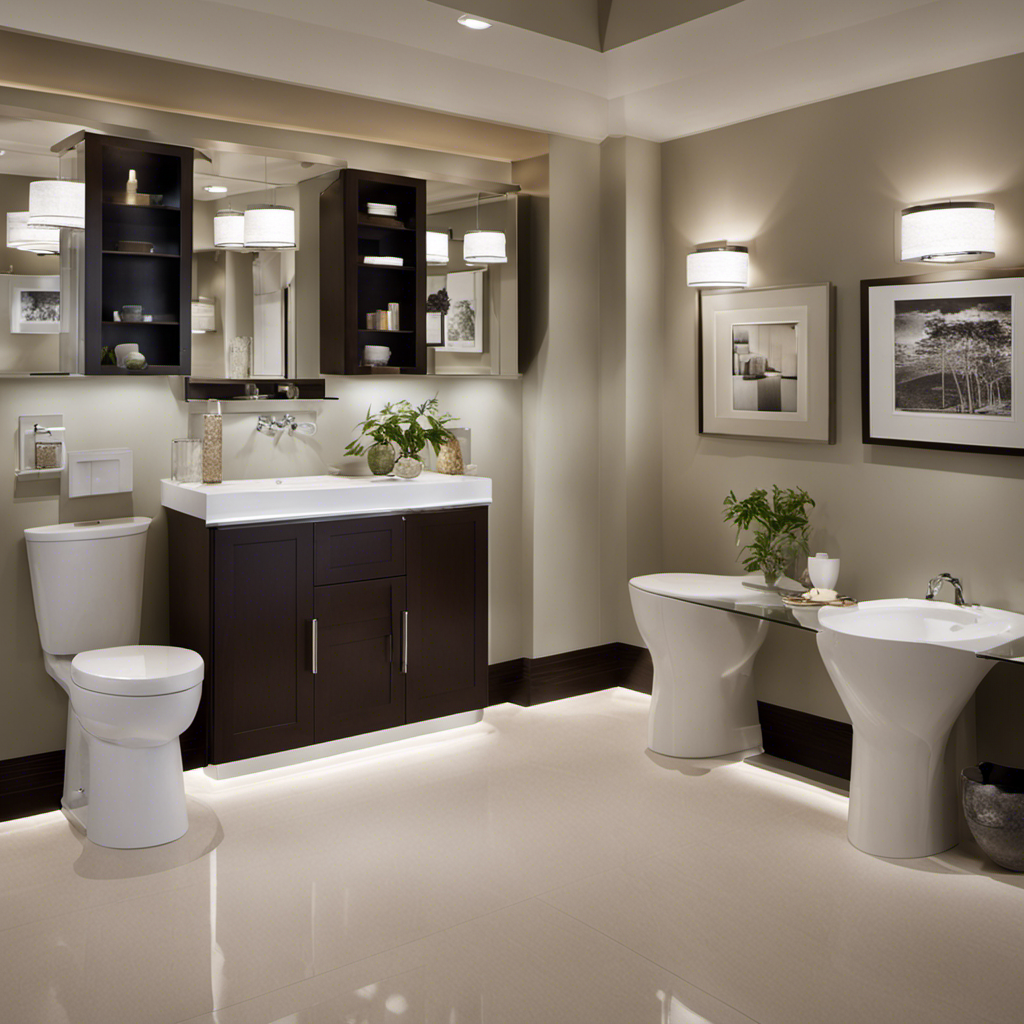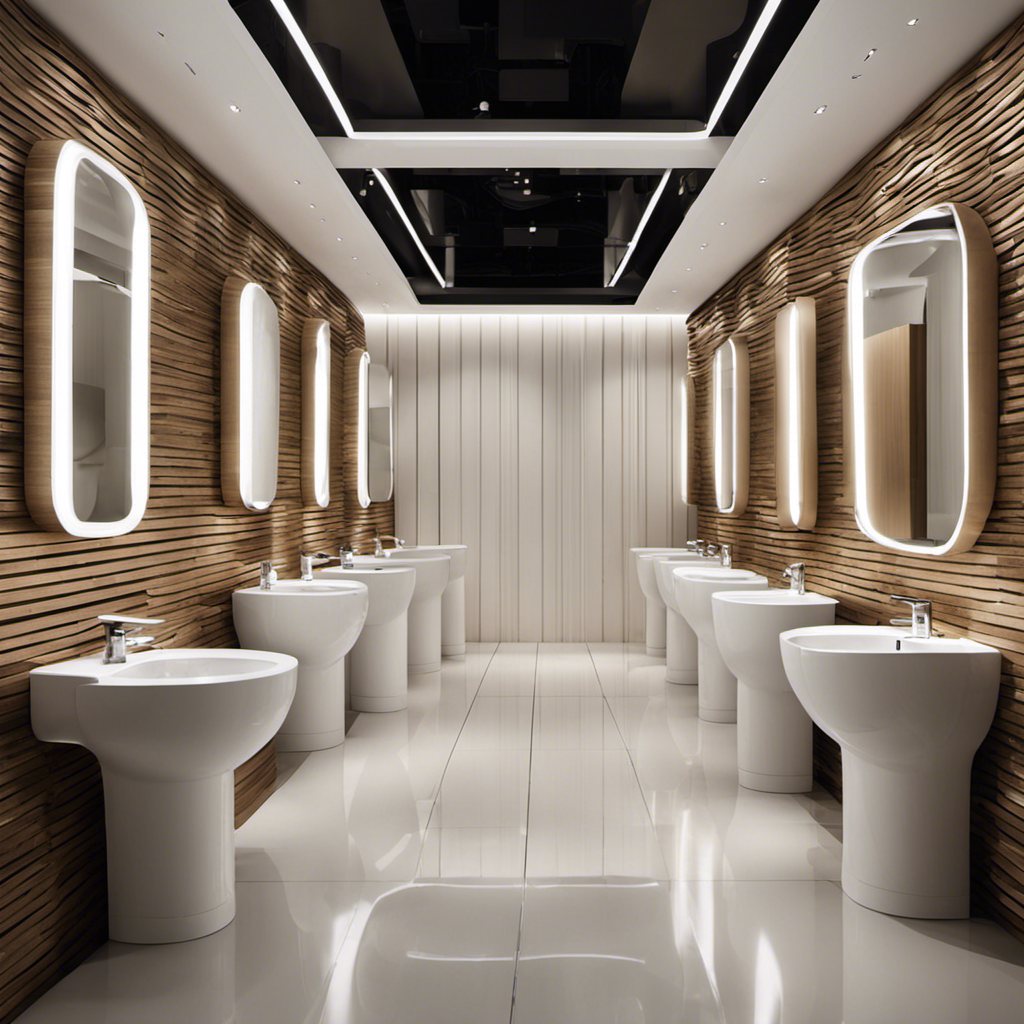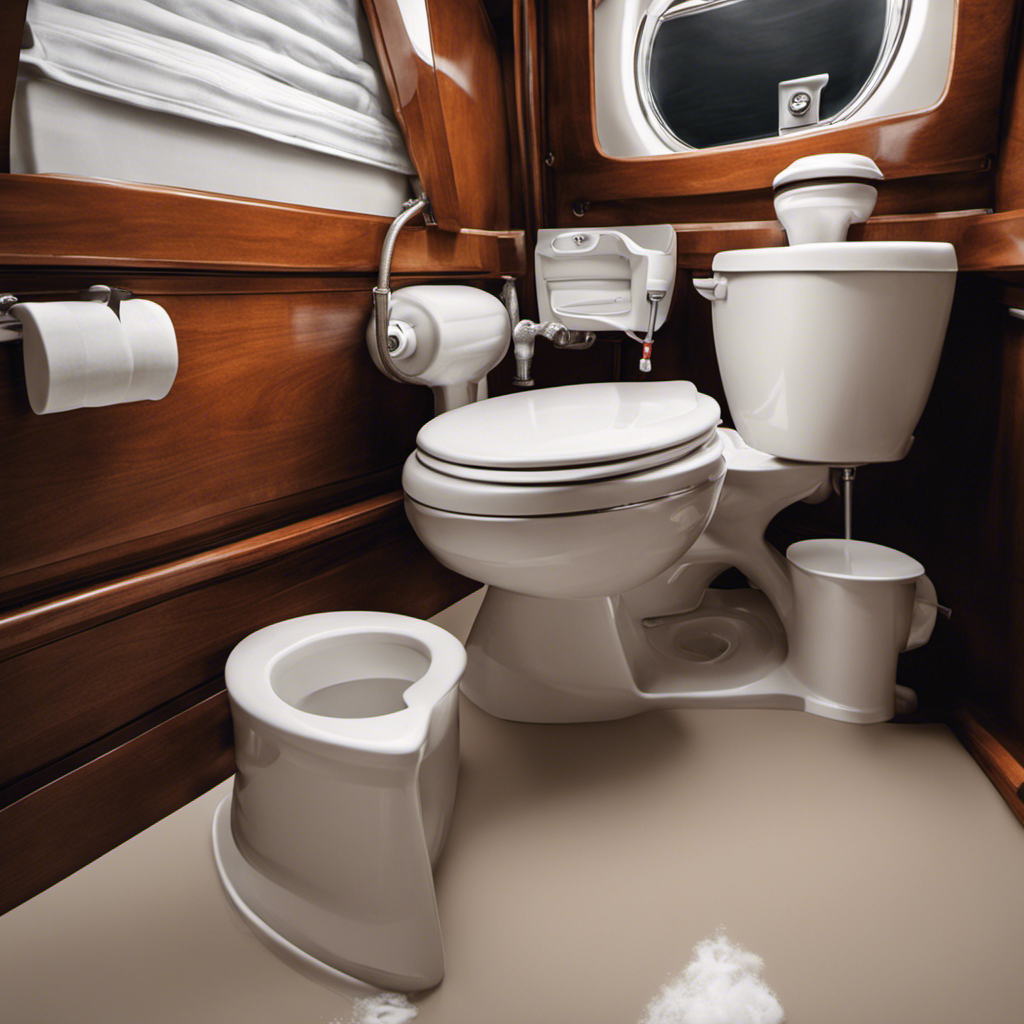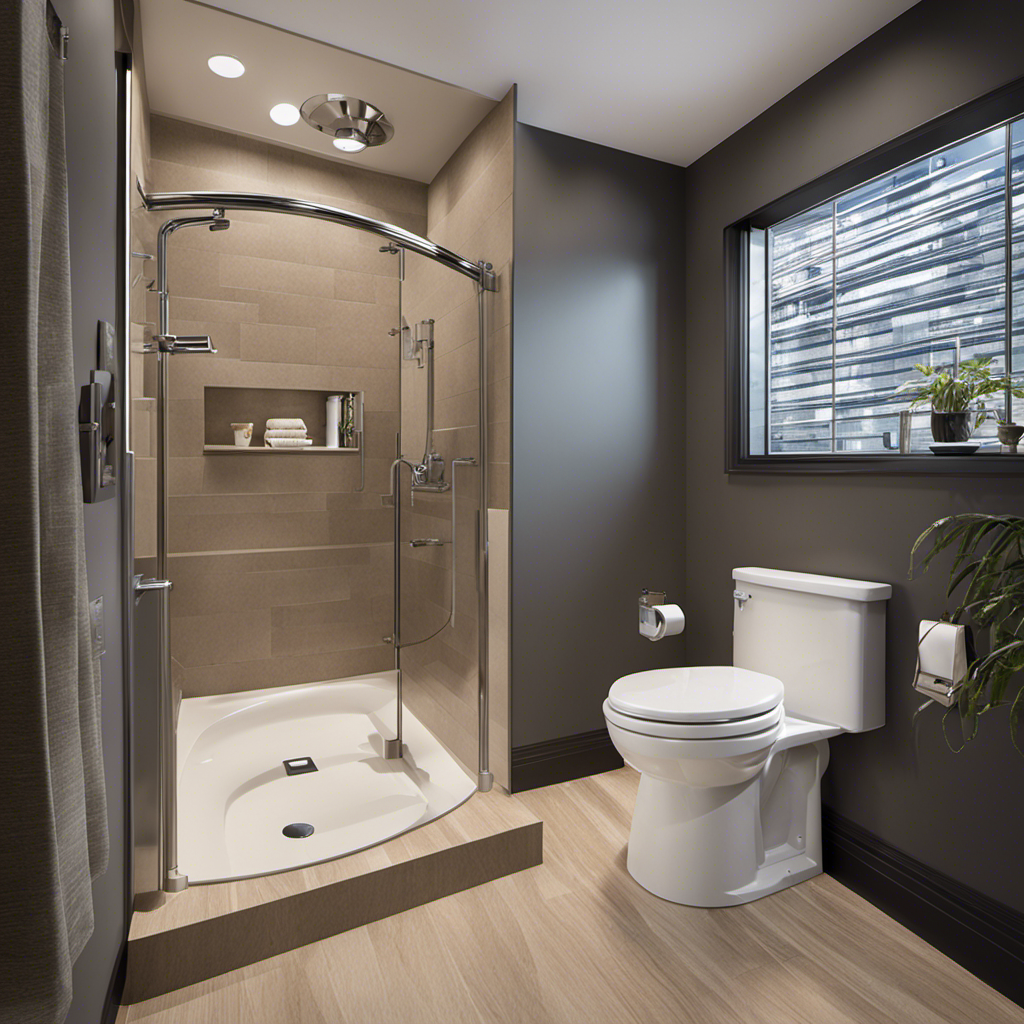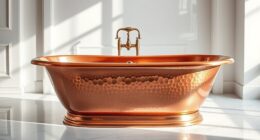When it comes to choosing a toilet, there are so many options out there that it can feel overwhelming. But fear not, because I’ve got you covered.
In this article, I’ll walk you through the factors to consider, the different types available, and how to understand water efficiency ratings.
Plus, I’ll share essential features and accessories to enhance your toilet experience.
By the end, you’ll have all the knowledge you need to confidently choose the perfect toilet for your bathroom.
Key Takeaways
- Size and fit: Consider the size of the toilet and measure the rough-in to ensure it fits comfortably in your bathroom space.
- Flushing power: Look for toilets with a powerful flush that can effectively remove waste in one go.
- Water efficiency: Opt for toilets with a WaterSense label indicating low water consumption without compromising performance to conserve water and reduce utility bills.
- Types of toilets: Consider different types such as wall-mounted toilets, dual-flush toilets, composting toilets, and low-flow toilets to save space, conserve water, and reduce strain on sewage systems.
Factors to Consider When Buying a Toilet
When buying a toilet, you should consider factors such as the size, flushing power, and water efficiency. These factors are crucial for both toilet installation and maintenance.
Firstly, the size of the toilet is important as it should fit comfortably in your bathroom space. Measure the rough-in, which is the distance from the wall to the center of the toilet flange, to ensure a proper fit.
Secondly, flushing power determines how effectively the toilet removes waste. Look for toilets with a powerful flush that can clear the bowl in one go.
Lastly, water efficiency is essential to conserve water and reduce your utility bills. Opt for toilets with a WaterSense label, which indicates low water consumption without compromising performance.
Different Types of Toilets Available in the Market
As you explore the market, you’ll find various types of toilets that are readily available for your consideration.
When it comes to toilet design trends, one popular option is the wall-mounted toilet. This sleek and modern design not only saves space, but also makes cleaning easier with its elevated position.
Another trend is the dual-flush toilet, which allows you to choose between a full or partial flush, conserving water and reducing your environmental impact.
If eco-friendly options are a priority for you, consider a composting toilet or a low-flow toilet. Composting toilets use natural processes to break down waste, while low-flow toilets use less water per flush. These options not only help conserve water, but also reduce the strain on sewage systems.
With these various types of toilets available, you can choose the one that best fits your needs and preferences.
Understanding Water Efficiency Ratings for Toilets
Understanding the water efficiency ratings for toilets can help you make an informed decision when choosing a new one. Water saving technology has become increasingly important in recent years, as we strive to reduce our environmental impact.
When it comes to toilets, water efficiency is measured by the number of gallons per flush (GPF). Traditional toilets typically use around 3.5 to 7 GPF, whereas newer water efficient toilets use significantly less, usually around 1.28 to 1.6 GPF.
This reduction in water usage not only helps conserve this precious resource, but also significantly reduces the amount of water that needs to be treated and processed. By choosing a water efficient toilet, you are not only saving water, but also reducing your carbon footprint and contributing to a healthier environment.
Essential Features and Accessories for Your Toilet
One essential feature to consider for your toilet is a dual-flush system. This system allows you to choose between a partial or full flush, saving even more water. This feature is not only environmentally friendly but also cost-effective in the long run.
When it comes to toilet seat options, there are several to choose from. These options include standard, soft-close, and heated seats. Standard seats are the most common and affordable option. Soft-close seats provide a quieter and more gentle closing mechanism. Heated seats offer added comfort during colder months.
In terms of cleaning and maintenance tips, it is important to regularly clean your toilet using a mild cleaner and a soft brush. This helps prevent the buildup of bacteria and stains. Additionally, it is recommended to check and replace any worn-out parts, such as flappers or fill valves. This ensures optimal performance and water efficiency.
Tips for Choosing the Right Toilet for Your Bathroom
When it comes to choosing the right toilet for your bathroom, it’s important to consider factors such as size, style, and water efficiency.
The first step in selecting a toilet is determining the size of your bathroom and the available space for installation. Measure the distance from the wall to the center of the drain to ensure a proper fit.
Next, consider the style that best complements your bathroom decor. There are various options such as one-piece, two-piece, and wall-mounted toilets.
Additionally, water efficiency is a crucial factor to consider. Look for toilets with a low flow rate to conserve water and reduce your utility bills.
Once you have chosen the perfect toilet, make sure to follow proper installation procedures and perform regular maintenance to keep it in optimal condition.
Frequently Asked Questions
What Are the Common Maintenance Tasks Required for Toilets?
Toilet maintenance tasks include regular cleaning, checking for leaks, and addressing clogs. Cleaning involves scrubbing the bowl and wiping down the exterior. Repair tasks may include fixing a running toilet or replacing faulty parts.
Are Bidet Attachments Compatible With All Types of Toilets?
Bidet attachments are compatible with most toilets, but it’s important to check for compatibility before installation. The benefits of bidet attachments include improved hygiene, reduced toilet paper usage, and a more comfortable bathroom experience.
How Can I Determine the Appropriate Seat Height for My Toilet?
To determine the appropriate seat height for your toilet, consider the toilet seat dimensions and the best toilet seat height options. It’s important to find a height that is comfortable and accommodating for your needs.
Are There Any Regulations or Certifications for Toilet Manufacturing?
Toilet manufacturing regulations ensure that toilets meet safety and quality standards. Certifications, such as WaterSense, indicate water efficiency. Understanding these regulations and certifications is crucial when deciding on a toilet to buy.
What Are the Different Flushing Mechanisms Used in Toilets?
Water saving toilets and dual flush toilets are two types of toilets that utilize different flushing mechanisms. Water saving toilets use less water per flush, while dual flush toilets have two buttons for different water flow rates.
Conclusion
After considering all the factors and understanding the different types of toilets available in the market, it is clear that choosing the right toilet for your bathroom is crucial.
With water efficiency being a top priority, it’s interesting to note that a standard toilet uses about 1.6 gallons of water per flush, while a high-efficiency toilet uses only 1.28 gallons. This statistic highlights the significant water savings that can be achieved by investing in a more efficient toilet, not only benefiting the environment but also your wallet.
So, make an informed decision and choose a toilet that meets your needs while conserving water.
